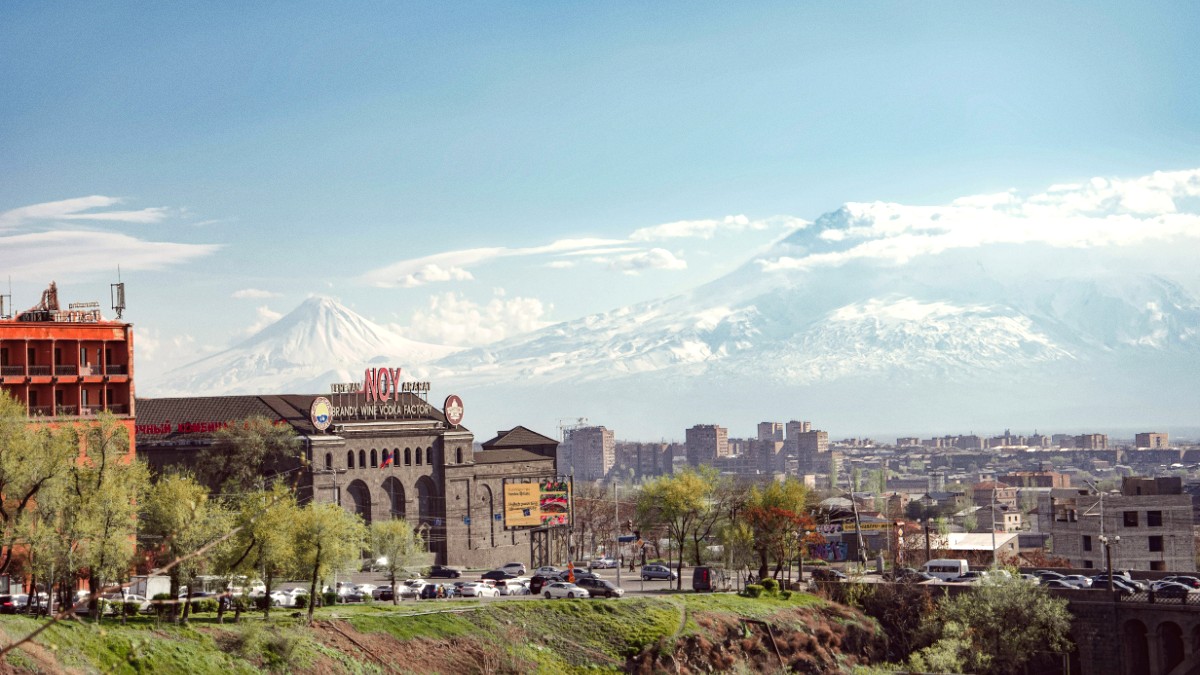
Armenia
Yerevan experiences four distinct seasons, each with its own appeal. Spring (April-May) presents mild temperatures (10-20°C/50-68°F) and blooming nature, with moderate rain. Summer (June-August) brings hot, dry conditions (25-35°C/77-95°F), sometimes exceeding 40°C. Autumn (September-October) is pleasant and sunny (15-25°C/59-77°F) with low precipitation. Winter (November-March) is cold and snowy (-5-5°C/23-41°F), transforming the city into a picturesque scene.
High season (May-June, September-October) means ideal weather for sightseeing and outdoor activities, with clear Mount Ararat views. However, prices for accommodation and flights are higher, and popular attractions have more crowds. Booking well in advance is a good idea. Shoulder season (April, July-August, November) offers fewer crowds and lower prices. April brings spring bloom; November, early winter charm. July-August can be very hot, shifting activities to early mornings or evenings. Low season (December-March) presents the lowest prices and opportunities for winter sports, with fewer tourists for a more intimate city experience. The snowy landscapes are beautiful. Drawbacks include cold weather, potential for snow and ice, and shorter daylight hours.
Late spring (May-early June) and early autumn (September-October) offer fine temperatures for hiking and outdoor exploration. City sightseeing is pleasant during these seasons.
December to March is suitable for winter sports in Tsaghkadzor. Late summer and early autumn align with the grape harvest for winery tours. Cultural and culinary events often take place in summer and early autumn.
July-August
Long daylight hours; lively city nights.
Very hot temperatures (40°C+ possible).
December-March
Lowest prices, winter sports.
Cold weather, snow/ice, limited outdoor access.
April, November
Fewer crowds, lower prices.
April rain, November early winter.
Summers become very hot. Sun protection, light clothing, and frequent hydration are wise. Winters are cold with significant snowfall, making warm, waterproof clothing advisable.
Precipitation is generally moderate. Spring and late autumn see more rain. Snowfall is common and often heavy during winter months.
Ideal in late spring & early autumn.
Most comfortable in spring & autumn.
Best from December to March (Tsaghkadzor).
Aligns with grape harvest in late summer & early autumn.
Many cultural events happen in summer & early autumn.
Most travelers find the entry process straightforward. Review the current regulations that apply to your nationality.
Citizens of many countries (e.g., US, Canada, UK, EU, Australia, NZ, Russia, CIS) can enter Armenia visa-free for up to 180 days per year. Other citizens typically need a visa.
When entering Armenia, regardless of visa status, have these documents ready. Immigration officials may request proof of stay and onward travel.
Managing your budget for a trip to Yerevan is straightforward, as Armenia offers good value compared to many Western destinations. The local currency and cost of living extend your travel funds.
The official currency is the Armenian Dram (AMD), symbol ֏. Banknotes range from 1,000 to 50,000 Dram. Coins come in 10-500 denominations. Exchange offices are widely available at Zvartnots Airport and throughout the city center.
Tipping is customary and a gesture of appreciation for good service.
Many parks, squares (Republic Square, Freedom Square), and churches are free to visit. Enjoy the Cascade Complex exterior and its views without museum entry fees.
Armenia is a safe destination for travelers.
No specific vaccinations are required for entry. Consult a healthcare professional for personal travel recommendations (e.g., Hepatitis A/B, Typhoid, Rabies for rural areas).
Yerevan tap water is generally safe from natural springs, though bottled water is widely available. Practice good food hygiene: wash hands, choose reputable eateries, and ensure food is cooked thoroughly. A portable Filtered water bottle can add safety.
Summers are hot. Protect yourself with Sunscreen, Wide-brimmed hats, and seek shade. Stay hydrated with plenty of water (consider Bottled water).
Altitude & Respiratory Notes
Yerevan's moderate elevation means altitude sickness is not a common issue. If visiting higher mountain regions, hydrate well and ascend gradually. Air quality can be lower in winter due to heating and vehicle emissions; those with respiratory sensitivities may note this.
Medical facilities in Yerevan are adequate for routine issues, with private clinics offering higher standards and English-speaking staff. Outside Yerevan, facilities are more basic. For serious conditions, medical evacuation may become an option. Travel insurance is highly advisable for medical emergencies, evacuation, and trip disruptions. Visit World Nomads or SafetyWing for policies. For medical and travel coverage for foreigners in the US, check Insubuy.
Always review policies to match your needs.
Police, Fire, Ambulance (unified national number).
Direct line for police services.
For medical emergencies.
Armenia, especially Yerevan, is a safe destination with low crime rates. Violent crime against tourists is rare. Petty crime like pickpocketing can occur in crowded areas. No neighborhoods are known for high crime rates. Armenia is in an active seismic zone; minor tremors are possible. Landslides are more common in mountainous regions. Heavy snowfall in winter can affect travel.
Carry copies of your passport and visa (if applicable) separately from the originals. Keep digital copies on your phone or in cloud storage. Report lost or stolen documents to local police immediately to obtain a police report. Contact your country's embassy or consulate in Yerevan for emergency travel documents.
Keep physical and digital copies separate from originals.
Obtain immediately for lost or stolen documents.
Reach out for emergency travel documents assistance.